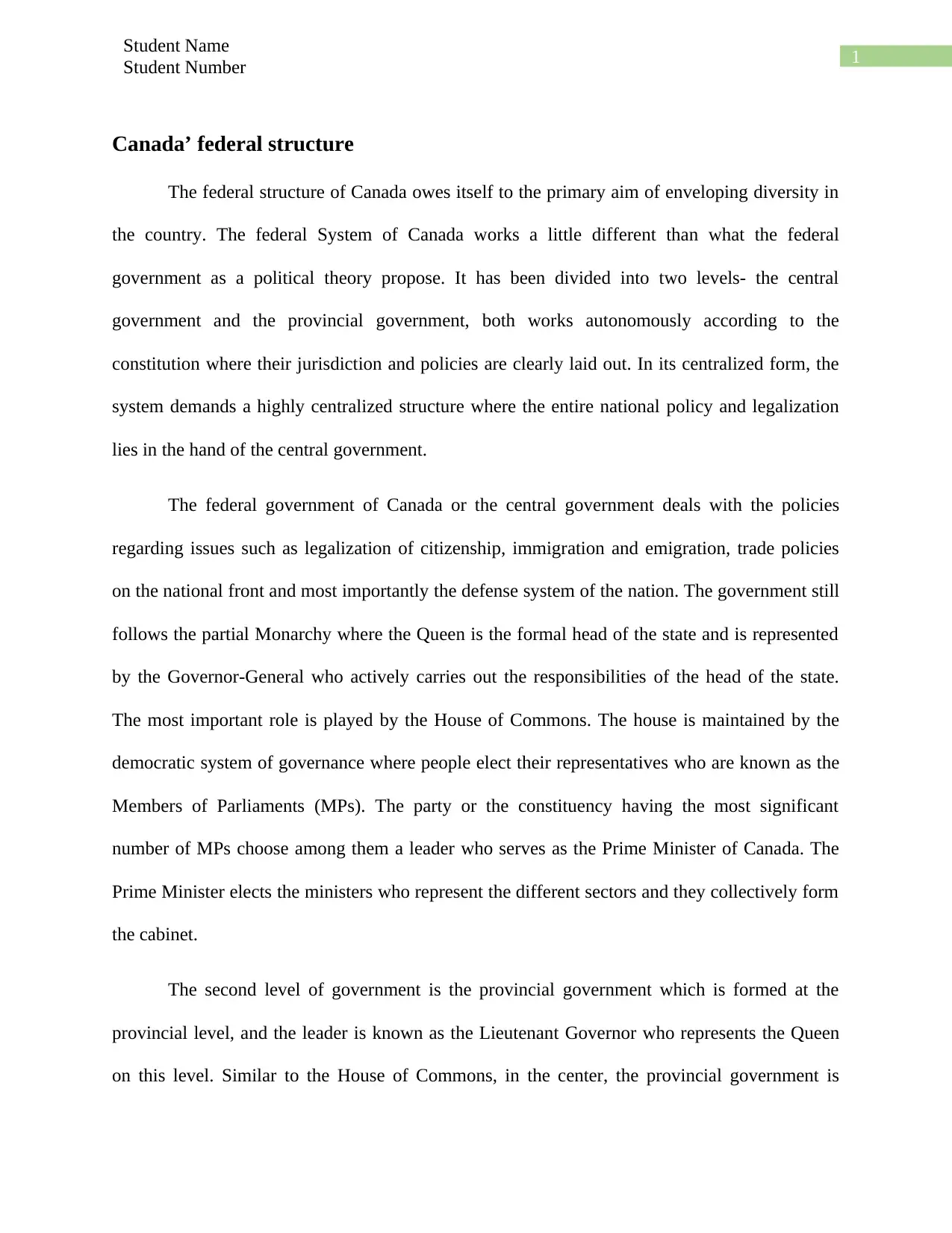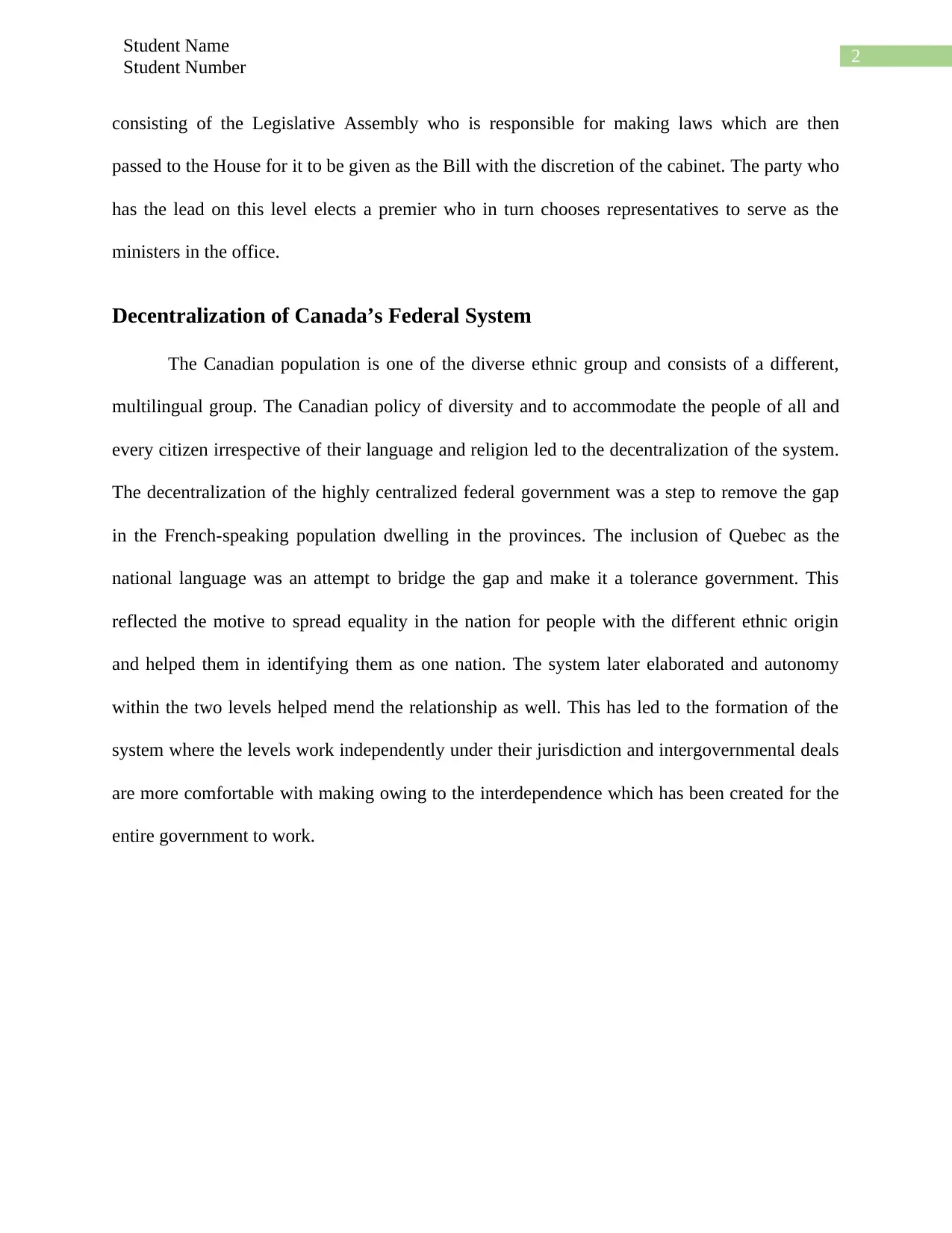Federal Structure of Canada: Decentralization and Governance Report
VerifiedAdded on 2022/09/12
|2
|565
|21
Report
AI Summary
This report provides a comprehensive analysis of Canada's federal structure, examining its unique characteristics and the division of powers between the central and provincial governments. It explores the roles of key institutions such as the House of Commons and the Lieutenant Governor, highlighting the significance of the Prime Minister and the Cabinet. The report also delves into the concept of decentralization within the Canadian context, emphasizing the importance of inclusivity and the accommodation of diverse ethnic and linguistic groups, particularly the French-speaking population. The analysis underscores the evolution of the Canadian federal system, from a centralized model to one that promotes interdependence and collaboration between different levels of government. The study highlights how the Canadian federal system functions, and how its structure has evolved to address the unique challenges and opportunities presented by its diverse population.
1 out of 2








![[object Object]](/_next/static/media/star-bottom.7253800d.svg)